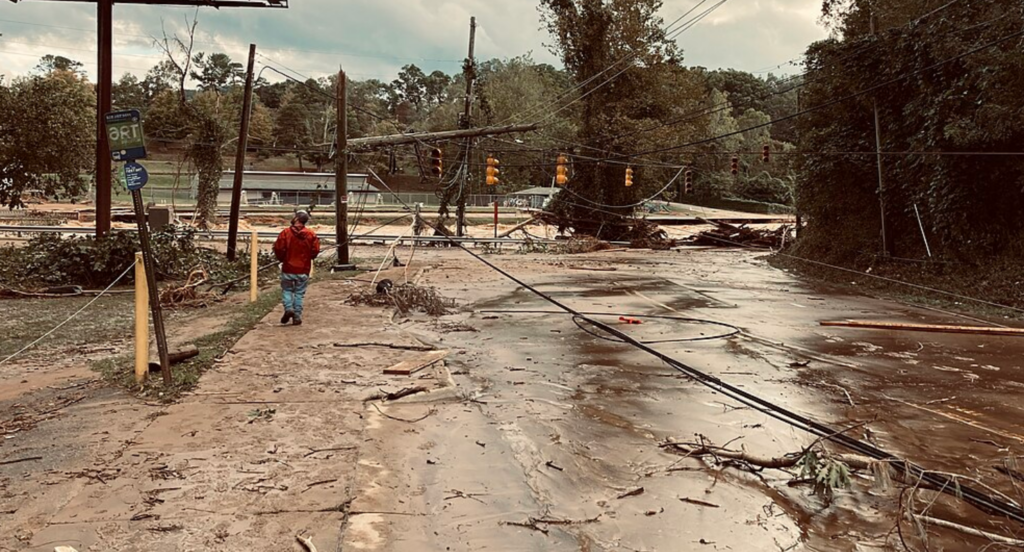In the aftermath of Hurricane Helene, a member of the Florida State Guard Special Missions Unit, Jonathan Howard, is sounding alarms regarding the insufficient government support in rescue operations. He has been actively involved in efforts to locate and rescue stranded individuals, including an 11-day-old baby. In a recent video shared on X (formerly Twitter), Howard criticized inadequate helicopter deployment to North Carolina, emphasizing that the situation for many residents remains dire. As civilians and volunteers step up to assist with recovery, Howard has partnered with a non-profit organization called Aerial Recovery to facilitate these rescue operations. His calls for increased helicopter support underline the critical need for immediate action to assist those impacted by the hurricane’s devastation.
Howard’s assertions highlight an alarming disconnect between official reports and the reality on the ground. He denounced the narrative promoted by government officials, stating that they lack an accurate understanding of the situation and are misrepresenting the efforts being made. He particularly stressed the challenge of accessing certain areas due to challenging terrain, emphasizing the necessity of aerial support for effective rescue operations. The ongoing search for SOS messages carved into the mud and painted on the ground serves as a haunting reminder of the desperate circumstances faced by those still stranded as a result of the hurricane’s aftermath.
Moreover, Howard specifically addressed a report by USA Today that credited the Biden-Harris administration’s National Guard with rescuing an 11-day-old baby from a hospital rooftop. He strongly refuted this claim, asserting that it was he, along with his associates and a civilian pilot with a personal helicopter, who were instrumental in saving the infant. According to Howard, without the intervention of civilians, both the baby and an elderly woman in critical condition would have perished due to a lack of timely assistance. This critical retelling of events underscores the significance of volunteer efforts and civilian involvement in disaster response when official resources fall short.
Furthermore, Howard’s confrontational remarks aimed at politicians and news outlets reflect a broader frustration and urgency felt by ground-level responders. His candid critique serves as a rallying call for citizens and officials alike to pay attention to the needs of affected communities. The emphasis on real-time rescues performed by civilians signals a growing sentiment that grassroots initiatives may be the most effective means of providing aid during such crises.
As the situation continues to unfold, the need for a coordinated rescue effort involving all available resources—governmental and civilian alike—has never been more paramount. The stories of survival and acts of heroism emerging from this disaster indicate the resiliency of the human spirit even under adversity. However, the ongoing challenges faced by rescue crews highlight the necessity for proper planning, allocation of resources, and unfiltered communication from leadership to ensure that no one is left behind in the wake of such natural disasters.
In conclusion, Howard’s appeal for more helicopter support and his outspoken criticisms reveal the complexities often involved in disaster response. His experiences in the field illustrate the gravity of the aftermath of Hurricane Helene, as well as the indispensable role that both governmental and civilian efforts play in rescuing those affected by such crises. In light of these developments, it is clear that proactive measures and improved communication are essential in effectively addressing the needs of communities recovering from natural disasters.

